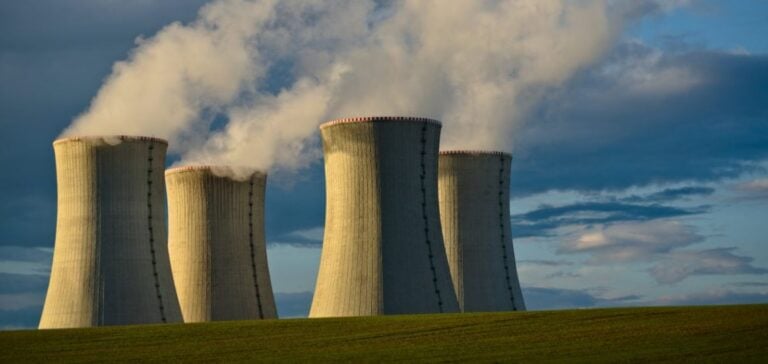The global nuclear energy market is experiencing significant expansion, bolstered by strategic public policies and decarbonization goals. Valued at USD 38.84 billion in 2024, this sector is expected to grow to USD 44.71 billion by 2029, with a compound annual growth rate (CAGR) of 2.9%.
Investments in nuclear energy are intensifying, particularly in major powers such as China, Russia, and France, which consider nuclear power a cornerstone of their energy sovereignty. These nations are enhancing their capacity to meet rising electricity demand while reducing reliance on fossil fuels.
A Market Supported by Public Policies
Governments play a central role in driving the growth of the sector. For example, China and Russia are heavily investing in advanced reactors and robust infrastructure development. In France, authorities support the modernization of existing plants while developing next-generation technologies to maintain their leadership in the field.
In the United States, funding programs and tax incentives are fostering innovation, particularly in small modular reactors (SMRs), which represent a flexible and economical alternative for local electrical grids.
Economic Drivers of the Nuclear Market
The competitive cost of nuclear energy compared to fossil fuels is one of its main growth drivers. Unlike renewable energies, which are subject to weather variations, nuclear energy provides a consistent electricity supply essential for stabilizing energy grids, particularly in regions with rapid urbanization and industrialization.
However, the sector must overcome several challenges, including high infrastructure costs and concerns related to radioactive waste management. Market players such as EDF (France) and Rosatom (Russia) are focusing on innovations to mitigate these constraints and ensure greater efficiency.
Asia-Pacific: A Key Player
The Asia-Pacific region dominates the global market, driven by China, India, and South Korea. These countries are investing in large-scale projects to meet growing energy demand. In China, for instance, ambitious plans aim to multiply reactors to achieve environmental and economic objectives.
Simultaneously, India is accelerating the development of its nuclear infrastructure to support its energy transition, while South Korea is strengthening international partnerships to export its advanced technologies.
Major Companies Shaping the Future of Nuclear
Companies like Westinghouse Electric Company (United States) and Rolls-Royce (United Kingdom) play a crucial role in the market’s evolution. These actors focus on developing new technological solutions, such as modular reactors and advanced waste management systems.
In Russia, Rosatom diversifies its activities, particularly in enriched uranium and fuel cycle-related services, to consolidate its position in the global market. These initiatives reflect a shared commitment to adapting the nuclear sector to the specific needs of each region.
Strategic Perspectives and Implications
By 2029, nuclear energy will remain a critical lever for addressing global energy challenges. Countries heavily investing in this sector will benefit from greater energy security and enhanced economic competitiveness.
However, the transition to a low-carbon energy system requires increased collaboration between governments and companies to maximize the benefits of nuclear power while addressing sustainability and safety requirements.






















